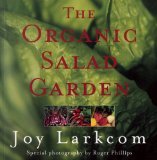
Gardening Inside in in October
Plants Coming In From The Cold...
The longer your house plants were allowed to remain outside in
the fall, the more shock they will go through when they are finally
moved indoors. If you haven't brought them in yet, do it now!!
Once chilly overnight temperatures become the norm you will need to bring your
winter houseplants back inside. When you do, make sure to check them for pests.
Simply rinsing the plants' leaves, and soaking the pots in water for 15 to 20
minutes will drown most soil-dwelling pests. Also, clean the windows where plants
will be placed. It can dramatically increase available sunlight and make for a
much healthier plant!
- Christmas cacti need special care now to produce flowers in
December. Buds will form when temperatures are between 50 and
60F, or if the plant is exposed to at least 13 hours of
complete darkness each night. Putting them in a spare room is
well worth the extra effort it may take for the spectacular
display of blooms that is sure to follow.
- Poinsettias need to be kept indoors in a spot where they get ten hours of bright light and fourteen hours of total
darkness, each day. Room temperatures should be around 65 to 70 degrees for the Poinsettias, but cooler (around 55 to 60) for the Christmas cactus.
- Continue to watch for insect or disease damage and take the necessary steps to control the problem.
- Plant fresh grapefruit or orange seeds in a well-drained, sandy
soil, and you will soon produce attractive, green-leaved plants.
- Cacti and other succulents, such as jade plants and sedums, do
best in a sunny south or west window during the winter. They can
tolerate cool temperatures, but you may want to move more-tender
foliage plants away from cold windows.
- If you use plastic pots instead of clay ones for your house
plants, you won't have to water as much or as often. Clay absorbs
soil moisture, minimizing the dangers of overwatering, but it
does require that you be more attentive to watering chores. To
reduce water loss from clay pots, nest them in decorative glazed
or plastic planters.
- When you cover up the furniture with drop cloths to give your
interior a new coat of paint, move your interior gardens to
another room for several days. Even the very low levels of
mercury contained in wall paint to retard mildew can produce
enough toxic fumes to severely hurt such sensitive plants as
Dieffenbachia and weeping fig.
- Do not pot cacti in plain sand, or they won't grow. They may
survive, but that is all, because sand contains no nutrients. Use
a mixture of one part sand and one part soil. Most desert cacti
need a bit of lime or crushed eggshells in the potting soil. If
you can't get sand for your cacti, substitute bird gravel,
available at pet stores.
- House plant growth slows as the days get shorter and light
intensity is reduced. This means that they will need less
frequent watering and fertilizing until next spring. Too much of
either in the winter months can cause weak growth.
- House plants need to come indoors before they are damaged by
the cold (below 50F). First be sure to check them for pests.
Rinse the plants' leaves, and soak pots in water for 15 to 20
minutes to drown most soil-dwelling pests.
- For healthy house plants, always use pots that have a drainage
hole. If you have an attractive pot with no hole either drill one
in it, or pot your plant in a smaller ordinary pot and set on top
of some pebbles inside the pretty one.
- Poinsettias are short-day plants and need special treatment to
have them bloom for Christmas. Keep the plants in an area where
night temperatures are around 60F and protect from artificial
light at night. Control day length by placing the plant in a dark
area at 5 pm and removing it at 8 am. Do this for 11 weeks. Start
now for Christmas blooms. In addition to this treatment, be sure
to provide them with adequate water, fertilizer, and night
temperatures to get a healthy display of color for the holidays.
- For easy, small-scale propagation of African violets and other
tender cuttings, soak peat pellets, squeeze well to remove excess
moisture, and set cuttings in the top of the pellet. Place in a
small plastic bag with a stick or label inside to keep the
plastic from touching the cutting. Seal the bag fairly tightly.
Place it in bright light, but not direct sun. When a good mass of
roots has formed, pot up the pellet.
"Tickle the earth with a hoe, it will laugh a harvest."
-- Author Unknown

FREE Garden Journal!!
Join "Garden Notes" and plan for Harvest Success as you track and record your gardening progress.
Your Free Personal Garden Journal has pages for jotting down notes on the seeds you start,
your new plantings, when you fertilized, and even a graph to plot a new garden.

FREE Report
If you're interested in growing tomatoes, you've got to read this free report, because you're about to find out
3 age-old, tried and tested, organic tomato growing secrets that turn any tomato plant into a thriving source of the
juiciest, most
mouth-watering tomatoes you've ever tasted.
I didn't want to see another internet "eBook" on growing anything, but my husband signed up for Kacper's free report and I have to tell you, it is WELL worth the read. If you think you know everything about growing tomatoes, I challenge you to read Kacper's report. HIGHLY recommended!
Free Report Here

What's New?
Discover How To Easily Build An Attractive And Affordable Greenhouse That Will Grow Anything In Any Conditions… Also, building your own greenhouse just makes economical sense. You can build a greenhouse at just a fraction of the cost of buying a pre-built one. Most pre-built greenhouse you buy need to be assembled anyway, you’re really just paying hugely inflated prices for the material.
Click Here!
Book of the Month

Based entirely on organic gardening principles. This says it all. Joy's book has been fully revised and updated and includes extensive new reading, particularly
on oriental and fruiting vegetables, and did I mention, is now entirely based on organic gardening practices.
Read More...






